
"The Gallery is a solo developed map for Half-Life Alyx, taking place entirely in and around a derelict museum, once used by the Combine for processing citizens. Long abandoned by its hosts, it stands empty except for a massive Citadel cable that crosses through. The cable appears to be losing power as it passes through the museum, though. What are the Combine trying to hide?" - Workshop Description
The Gallery is available to download from the Half-Life: Alyx workshop.
A text walkthrough can be found here.
A video walkthrough can be found here (1 hour).
The development period for the level occurred between December 2021 and August 2022. During that time, I got myself up to speed with the changes to Source 2's Hammer, and acclimated to the Source 2 workflow. The level is composed from shipped Half-Life: Alyx assets and some custom XML / CSS (For the credits, modified from the HLA mod Loco-motive).
The primary reference for the map is a location in Berlin called Museum Island. The museum in the level is an amalgamation of the museums in the complex and other European galleries.
Sampling the top rated Half-Life: Alyx workshop content, most levels followed the established campaign formula of linear flow. To help the level stand out, I looked to open world action/simulation games for inspiration. My initial plan was a fully explorable museum, where players would receive hints on where to go but otherwise would be allowed to tackle challenges in any order.
An open level has several challenges that Half-Life: Alyx didn't have to answer during the campaign. How do encounters work? What happens when players exhaust the ammo supply? How does the content have to be built to ensure modularity?
Encounters were still structured linearly, with trigger volumes spawning in enemies for traditional combat encounters. 16 encounters were designed and implemented, varying in complexity from two enemy factions fighting to a zombie knocking open a door and getting shot by entrenched suppressors.
The resource economy was handled by a new piece of gameplay called the Idler. Taking inspiration from resource idler games, I scripted up an in game facsimile. The Idler ticks power over time, and that power can be spent on items in its shop. In addition, players have some agency to affect its gathering rate by hitting the big button with their hand or weapon.
The Idler was successful enough to affect the gravity of the level and makes a good pairing with the Combine Fabricator. The critical path of the level passes the Idler three times to let players view their resources and take a moment to fill holes in their supplies. With both the machines in the same area, the foyer became a safe space where players could retreat to, take a break, spend resin / resources, and continue out again into the museum when they felt ready.
Several other Combine machines were scripted to solve similar gameplay wrinkles. The battery chargers on the cables served as an end goal to each section of the map, and provided a consistent visual target. The slide locks were created to be a bulletproof lock for chain-link gates, and are used to open shortcuts through the level, echoing back to the open world adventure influence.
With the open level, optional content became a necessity to drive players to explore all the rooms and spaces in the museum. The square galleries were reminiscent of Portal, and lent themselves well to small, single room based puzzles that range in complexity (Tripwire Gallery) to simple path following (Pod Wall Gallery).
The open level also provided an organization challenge. With Source 2's new prefab system, the level was able to be divided up into manageable chunks that could be worked on in test content or updated without affecting other sections of the level. A reliance on prefabs also opens the level up to parallel development. In total, I generated about 400 prefabs of varying size and complexity during the development period.
The scripting for the level was done in prefabbed chunks, organized using editor only meshes and world text. I focused on keeping the scripting organized and grouped with its content. Global point entities were used when possible to keep special case scripting to a minimum. Adhering to this organization standard allowed for quick identification of bugs and proactive fixes, enabling content development to be extremely agile and robust.
The environment art was planned to match the official levels with some fidelity adjustments. Performance and mesh optimization were at the forefront of the work. I was very conscious about the lightmap atlas size and not allowing lightmaps on surfaces that would be blocked from view (such as behind moulding). The galleries were assembled out of prefab sections of rooms, with exposed variables to control additional details such as plaster color, vents, lights (with on and off states) and outlets.
Compile duration was 14 hours on 8k lightmaps. I built a new PC specifically for development and utilized the old PC as a Perforce server. I kept detailed changelists that were processed into the change notes for the workshop page. Milestones were branched and archived in case I needed to go back in the Perforce history to recover content.
I implemented a strict protocol of verification when a new compile was finished. New compiles were status checked, with callouts for progression and optional features. Task lists were generated off of these status reports and assigned priority, with higher priority reserved for progression blocking, crashes, and non-functional features. A OneNote notebook served as the living production document that covered discipline notes (design, lighting, audio, etc), best practices, and discovered knowledge.
In the end, I'm extremely happy with how the development of The Gallery went! It was significantly more complex than originally devised and development was smooth and painless. The power of Source 2's Hammer cannot be understated, many features and goals were trivial to implement that would be a pain in other engines. I look forward to more experimentation with Source 2 in the future.
A text walkthrough can be found here.
A video walkthrough can be found here (1 hour).







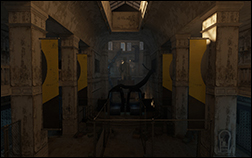
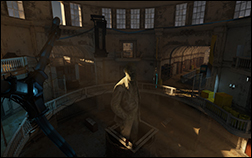

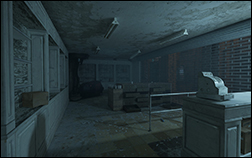
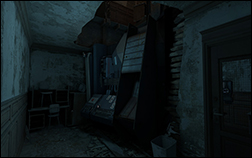
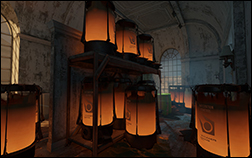
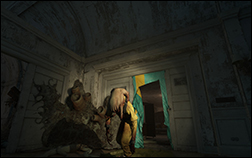
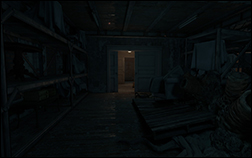
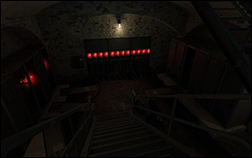
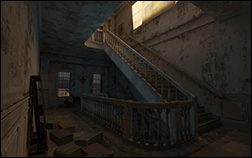
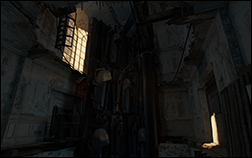
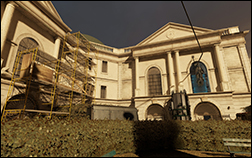
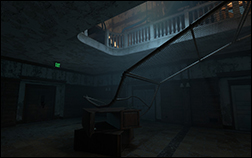

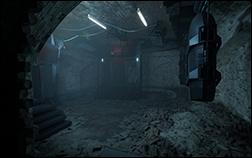

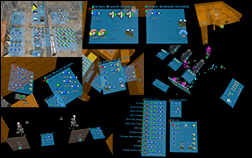



 Image Font: SteelTongs by TracerTong.
Image Font: SteelTongs by TracerTong.